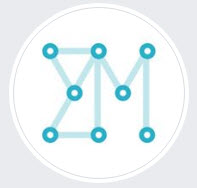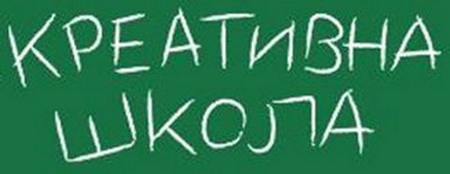Sve uređene države sveta već su različitim merama regulisale upotrebu štedljivih sijalica tako da su one obavezne u svim javnim zgradama, za njihovu kupovinu daju se značajne poreske olakšice, dok postoje države poput Australije, koje su potpuno zabranile prodaju klasičnih sijalica. U našoj zemlji, nažalost, nema nikakvih poreskih olakšica ili stimulacija za njihovu kupovinu, a statistika kaže da bi korišćenjem samo jedne štedljive sijalice u svakom od 2,5 miliona domaćinstava Srbija godišnje uštedela 16 miliona evra. Štedljiva sijalica košta oko 350 dinara, dok je za običnu, potrebno izdvojiti nešto više od 25 dinara. Na prvi pogled se to čini kao bespotreban trošak, ali kada se sve stavi na papir, očigledno je da su uštede velike. Uporedimo klasičnu sijalicu od 100W i štedljivu od 20W, jer emituju istu jačinu svetlosti. Radni vek štedljive sijalice iznosi oko 8000 časova, što znači da će ona u toku svog radnog veka potrošiti oko 160kWh električne energije. Ako uzmemo da je prosečna cena struje oko 4 dinara po kWh, to znači da će energetski štedljiva sijalica u toku svog radnog veka potrošiti električne energije u vrednosti od 640 dinara. Kada na to dodamo cenu sijalice, dobijamo da cena osvetljenja za 8000 sati iznosi 960 dinara. Klasična sijalica sa usijanim vlaknom od 100W ima rok trajanja od 1000 radnih sati i pod pretpostavkom da je zaista kvalitetna i da će izdržati svoj radni vek, za taj rad će potrošiti 100kWh električne energije. Za rad od 8000 sati, poput štedljive sijalice, biće nam potrebno 8 klasičnih sijalica, koje će za to vreme potrošiti 800 kWh el. energije, što iznosi 3.200 dinara. Kada na to dodamo cenu od 8 sijalica, prosečne cene od oko 32 dinara, ukupna cena osvetljenja iznosiće 3.456 dinara za 8000 sati.
 Zaključak je da je energetska, a samim tim i finansijska ušteda evidentna u toku eksploatacije energetski efikasne sijalice i da se uložena sredstva vraćaju u proseku za oko 12 meseci, što je čini daleko boljim izborom, na duže staze, od standardne sijalice.
Zaključak je da je energetska, a samim tim i finansijska ušteda evidentna u toku eksploatacije energetski efikasne sijalice i da se uložena sredstva vraćaju u proseku za oko 12 meseci, što je čini daleko boljim izborom, na duže staze, od standardne sijalice.
Gradska kuća u Novom Sadu jedan je od dobrih primera kako energetska efikasnost funkcioniše u praksi jer je uvođenjem standardnih sijalica ostvarila značajne uštede energije i novca. Oznaka energetske efikasnosti elektronskih aparata Prema Zakonu Evropske unije, svi novi električni uređaji i aparati za domaćinstvo, koji se na tržištu Evropske unije prodaju, iznajmljuju ili kupuju, moraju imati oznaku energetskog razreda, koja pokazuje prosečnu potrošnju električne energije pri korišćenju uređaja i aparata. Oznaku energetskog razreda obavezno moraju imati sledeći uređaji i aparati: Električne mašine za sušenje, kombinovane mašine za pranje i sušenje veša, mašine za pranje sudova, električne peći, klima uređaji, sijalice. Nalepnica nam pomaže da napravimo PRAVI izbor pri kupovini, jer sadrži informacije o potrošnji energije i kvalitetu rada uređaja. Skala energetskih razreda prikazana je strelicama sa slovnim oznakama od „A“ do “ G „, pri čemu su strelice različite dužine i boje. Energetski razred „A“ označen je strelicom zelene boje koja je i najkraća. Duža strelica znači i veću potrošnju energije. Energetski razred konkretnog uređaja prikazan je SLOVOM na širokoj strelici crne boje sa desne strane skale energetskih razreda. Potrošnja električne energije iskazana je brojem ispod skale. Energetski razred „A“ označava uređaj sa najmanjom potrošnjom, odnosno, energetski najefikasniji uređaj, dok energetski razred “ G “ označava uređaj sa najvećom potrošnjom energije, odnosno najmanje energetski efikasan uređaj. Potrebno je zapamtiti da je energetski razred „A“ bolji od “ B „, “ B “ bolji od “ C „, “ C “ bolji od “ D „, “ D “ bolji od „E“, „E“ bolji od “ F “ a “ F “ bolji od “ G „. Slovna oznaka energetskog razreda prikazana je sa desne strane slike koja prikazuje energetsku efikasnost uređaja.Danas neki uređaji, najčešće frižideri, zamrzivači i njihove kombinacije, imaju oznaku i „A+“ i „A ++“, ili „AA“ i „AAA“ koja stoji pored strelice za razred „A“. To znači da su od donošenja zakonske obaveze u Evropskoj uniji sami proizvođači poboljšali energetsku efikasnost iznad one koja se zahteva propisima. Kvalitet rada uređaja, na primer, kvalitet pranja kod mašina za pranje veša i sudova i broj obrtaja rada prikazani su tako|e slovnim oznakama. Potrošnja vode i buka pri radu prikazani su brojevima. VAŽNO: Ako uređaj ima nalepnicu, ne znači i da ima i malu potrošnju električne energije. Izaberite uvek uređaj sa slovom „A“ ili što bliže slovu A – u alfabetu. Uostalom, prvo smo i naučili da kažemo slovo „A“! Na osnovu nalepnice možete napraviti najbolji izbor i zanovac koji ste namenili za kupovinu uređaja dobićete najviše.

Izborom aparata koji imaju „Energetskuzvezdicu“ možete potrošiti i do 70% manje električne energije i time uštedeti i energiju, i novac. Energetski razredi ove grupe uređaja su označeni istim slovnim oznakama kao i mašine za pranje veša i sudova i imaju isto značenje. Od 1999. godine standardi u Evropskoj uniji za ovu grupu uređaja su pooštreni, tako da je zabranjena prodaja uređaja koji imaju energetski razred niži od „D“, odnosno mogu se prodavati samo uređaji energetskih razreda „A“, „B“, „C“ i „D“, a uvedeni su i energetski razredi „A+“ , „A++“ i “A+++“.
Sviđa mi se Učitavanje...
















